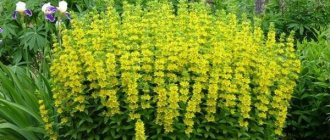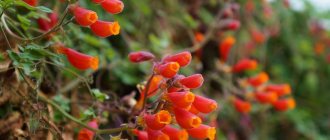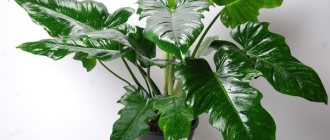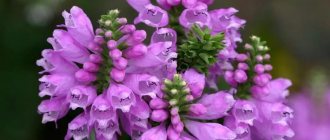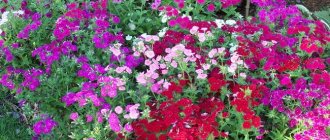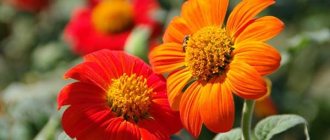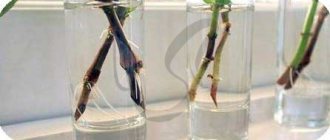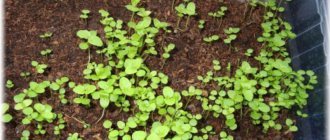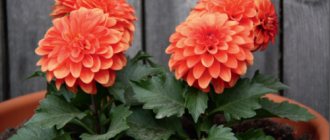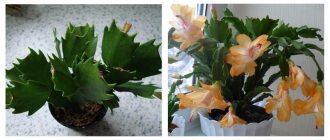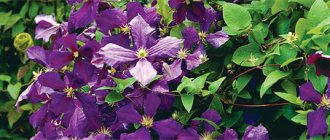The largest group of meconopsis, called (Big blue poppies), are what are commonly called the "Himalayan poppies": meconopsis alphabetic, large, simple-leaved and hybrids. Among them there are albinos, and the flowers can be in lilac and purple tones. These are usually perennials, up to 1.5 m high, with a rosette of several large pubescent elliptical leaves. This group of meconopsis is characterized by a certain percentage of individuals that behave as monocarpics, that is, they die off after flowering and fruiting.
Purple meconopsis (Meconopsis punicea) and corydalis
- Meconopsis alphabetic: description
- How to buy good planting material
- Garden conditions for meconopsis
- How to care for meconopsis
- How to propagate meconopsis by seeds
- Growing meconopsis from seeds
- How to propagate meconopsis by dividing the bush and cuttings
Meconopsis alphabetic: description
Meconopsis betonicifolia is part of the group of so-called “Himalayan poppies”. The leaves of the plant are similar to the capital letter grandiflora. The leafy peduncles reach a height of 90 cm. The peduncles are multi-flowered, there are several of them on the bush and each has 12-15 buds. They all bloom for more than a month, just like the luxurious monocarpic giant meconopsis. The first flowers open in mid-June. Their diameter is about 4-11 cm, the number of petals is from 4 to 8. The sky-blue color contrasts sharply with the bright yellow stamens. Despite their apparent tenderness, the flowers are very resistant to wind, rain and heat. True, at temperatures above 35° the buds begin to dry out without opening. Each flower lasts 5-7 days, and in total the flowering lasted about 3 weeks. The last flowers have a lilac tint in color.
Pratt's Meconopsis (Meconopsis prattii)
Features of care
In order for a plant to delight with beautiful flowering, it is important to create the most comfortable conditions for it.
Watering and weeding
Himalayan poppy is a moisture-loving plant. However, it is unacceptable to allow water to stagnate near the root system. Watering is carried out as needed. Drought has a detrimental effect on flowers.
Weeds growing near the Himalayan poppy must be systematically removed. This condition will ensure healthy growth of meconopsis, since the weeds carry diseases. It is important to systematically loosen the soil at the planting site.
Top dressing
It is important to feed Himalayan poppy if the soil on the site is not nutritious. A few weeks before flowering, ammonium sulfate is added to each meconopsis.
Mulching
The soil surface in the place where the ornamental plant grows should be mulched. This will preserve moisture and reduce the level of weed growth.
After the inflorescences fade, it is important to cut off such flowers so as not to spoil the appearance of the plant.
Blue Himalayan poppy
Preparing for winter
Thanks to the painstaking work of breeders, today the varieties bred do not require special measures to prepare for winter. Before frost occurs, the drying plant is cut off under the root system. You can cover the root system with a layer of mulch.
How to buy good planting material
If you want to start a “Himalayan blue poppy” in your own garden, it is best to purchase one-year-old seedlings in containers and immediately plant them in the ground - the plants do not like being kept in pots for a long time. It is also possible to plant with dormant rhizomes, which are now available for sale in early spring. It is important to keep the rhizome dormant until planting - you can bury it deep in the snow in the garden or store it in the refrigerator at a temperature no higher than +2°C. In both cases, the rhizome, immersed in slightly moist peat, perlite or sphagnum, should be in a perforated bag. Plants are planted immediately in a permanent place, since meconopsis do not react well to damage to the roots during transplantation.
White-flowered meconopsis
Selecting a site for planting and preparing the soil
When choosing a place for planting, you should pay attention to shaded areas and areas near the pond. Under no circumstances should plants be planted in sunny places.
The soil should be loose, slightly acidic and moderately nutritious. To prepare it yourself, mix:
The mixture is disinfected with potassium permanganate dissolved in water. If desired, you can purchase a slightly acidic substrate.
To grow seedlings, seeds are planted in late February. It is better to sow Himalayan poppy (meconopsis) in open ground in early May.
Garden conditions for meconopsis
Of course, we are unlikely to be able to create a semblance of the high-mountain meadows of Tibet in the garden. But we can exclude stagnant waterlogging, which definitely does not happen there. The soil is preferably loose, not heavy, fairly fertile, neutral or slightly acidic. It is best to enrich it with turf or leaf humus, manure or rich compost, and it should be perfectly drained. Strongly alkaline soils are not suitable.
Choose a planting site that is bright, but not hot; the soil under the plants should not overheat or dry out. Mulching helps to some extent (compost, peat, gravel, bark), but in hot summers meconopsis suffer from high temperatures and dry air. When choosing a place for meconopsis, take into account the local climate and microclimate of the garden: from light with light shading in the north of the Leningrad region to planting under dense tree crowns in the southern part of the middle zone. Meconopsis usually does not have problems with wintering.
Meconopsis in the garden with decorative perennials
Disease and pest control
Powdery mildew is a fungal infection . The disease in mecanopsis develops rapidly and encounters little resistance. All parts of the plant are covered with plaque. The coating resembles grayish-white flour. Drooping leaves wither and the plant dies.
The fight against powdery mildew involves taking the following measures:
- cleaning the plant from damaged parts
- pruning thick bushes
- removal and replacement of top layers of soil
- multiple treatments with fungicides, for example, Amistar extra.
As a preventive measure, using a solution of soap and soda (1:1) is effective. For a volume of 4 liters, 20 grams is enough. baking soda, half a teaspoon of soap in liquid form. Treatment of the plant 2-3 times is considered sufficient, subject to a seven-day interval between sessions.
Among pests, aphids cause serious damage . Aphids are small insects with an egg-like body, long legs, and move very slowly. Some individuals have wings, others do not. Aphids feed on sap, sucking it from various parts of the plant: stems, leaves, buds, buds. The defeat manifests itself in deformation of inflorescences, stems, shoots, curling of leaves, slower growth, and non-ripening of fruits. The pest weakens the flower so much that it may die during wintering.
Insecticides of various modes of action are successfully used to control insects. Chemicals are used carefully, because along with aphids, their natural enemies are destroyed: ladybugs, ichneumon wasps, and predatory bugs.
Treatment with decoctions of wormwood, tansy, garlic, onions, tomato tops, dandelion, and mustard brings tangible positive results. Decoctions are used 2-3 times with a week break.
Preventive measures against aphids are to follow the rules for caring for meconopsis. The correct use of fertilizers plays an important role. Aphids love plants that are weak or oversaturated with mineral fertilizer. Everything matters: the right place for planting, the right amount of moisture, sunlight, active air circulation, special importance is attached to mulching or simple loosening.
As a precaution, a thorough inspection of newly acquired plants for the garden is carried out; there is a possibility of bringing aphids to the site along with the “newcomers”. If a pest is detected, it is recommended to immediately take measures to destroy it. Otherwise, the aphids will multiply quickly. Fighting this insect takes a lot of effort and time.
How to propagate meconopsis by seeds
Meconopsis can be propagated by seed and vegetative methods. If meconopsis blooms and bears fruit, you can try collecting and sowing the seeds. Seed propagation will not give a complete repetition of the parent specimen, but that’s all the more interesting! If you already have several forms of M. alphabifolia growing, by collecting and sowing the seeds, you can hope for variations with an unusual petal shape to appear. Two out of a dozen of our seedlings turned out to be bright purple, and not blue, like their “parents”. When expecting seeds, you need to take into account that not all forms set them, some are sterile. To obtain seeds, leave one peduncle with one seed capsule from the first flower - the oldest and largest. The box must be removed in time (in the second half of August) so that the seeds do not spill out. When stored in the refrigerator, the seeds germinate well even after a year.
Rare species of Himalayan poppy
Meconopsis karavella growing from seeds Meconopsis karavella photo
- Caravel (Meconopsis karavella) - hybrid variety, orange, fluffy;
- Five-lined poppy (Meconopsis quintuplinervia) of lilac shades with flowers shaped like a bell;
- Nepal (Meconopsis napaulensis) - a dense herbaceous shrub, with tall stems, inflorescences in colors ranging from pink to purple, blooms and bears seeds once in its life;
- Paniculate (Meconopsis paniculate) is a plant with inflorescences of large, yellow, cup-shaped flowers;
- Purple-red (Meconopsis punicea) is distinguished by drooping bell-shaped inflorescences of lilac, purple color.
Growing meconopsis from seeds
The optimal time for sowing meconopsis seeds is: late February - early March. Seeds are sown on the surface of the substrate (you can use a purchased one for sowing, adding a quarter of coarse-grained washed sand to it), then sprayed with a spray bottle and lightly pressed onto the soil with a plank, without sprinkling with soil. To maintain uniform humidity, the bowls with crops are covered with transparent plastic covers or placed in a greenhouse.
After 10–12 days of keeping at room temperature, the crops are placed in a cool, bright place with a temperature of +5…+10°C. After 2–3 weeks, friendly shoots appear. Now you need to remove the lids from the seed containers and ensure that the soil is maintained at moderate moisture without flooding or drying out the seedlings. At the same time, the crops should not be exposed to direct rays of the sun. This stage of meconopsis development is the most critical - the seedlings are vulnerable and easily die if the temperature (ideally up to +15°C), light or humidity conditions are violated.
Strong seedlings can be planted directly into the ground, into a school. Usually by the end of May they are ready for this. To pick, wait for rainy and cool weather. Plants can be planted in a permanent location at the end of August or next spring. When digging, try not to disturb the root ball - then the plants quickly take root in the new place.
Meconopsis and astrantia
How to propagate meconopsis by dividing the bush and cuttings
Vegetative propagation (division, cuttings) requires some skills, speed and accuracy. Forms with a dense bush of rosettes very close to each other are difficult to divide. Those that develop a slightly looser clump are subject to division.
The easiest way is to divide sleeping meconopsis, but to do this you need to guess the timing, since plants wake up very early in the spring and the period of time when the soil has already thawed and the meconopsis is sleeping is negligible. You can try to do this in early August, when the plant is just beginning to grow new rosettes of leaves. The obstacle is usually too hot and dry weather.
The entire bush is removed and divided into parts with a bud (or a young rosette of leaves) in each. Use your hands or small forks to carefully dismantle the roots. The divisions are immediately planted, watered, shaded (if not dormant) and then cared for as usual. Young rosettes taken from cuttings (with a heel and, if possible, with a root) are planted in a schoolhouse under lutrasil, plastic, glass, shaded and kept without excess moisture and without drying out.
Meconopsis in a semi-shaded corner of the garden
General information
As a rule, a certain genus of plants has close habitats. The genus of Himalayan poppy has become an exception; its peculiarity is the fragmentation of its habitat. Depending on the place of growth, you can notice species differences, since the environment greatly influences the appearance of the plant.
The main area where blue meconopsis grows is the Himalayas. Flowers are found in different shades: blue, scarlet, yellow, snow-white. They can grow either singly or form whole inflorescences of different types.
Another habitat is considered to be the island of the United Kingdom. Meconopsis Cumbrian is found in Wales and Ireland. A striking species feature that distinguishes this variety of poppy from Himalayan meconopsis is the absence of blue and gray buds.
Varieties
Himalayan varieties are perennial plants. Their height is impressive, reaching two meters. The smallest species have a height not exceeding twelve centimeters. For growth, they prefer forested areas where the sun's rays do not penetrate, as well as alpine meadows with high humidity. These plants can often be found on Nepalese, Chinese and Tibetan territories.
Over the past couple of years, the spread of certain species has been actively occurring. This is often facilitated by people transporting plants. Thanks to this, the habitat of meconopsis has increased significantly.
The only obstacle to even greater spread is climate. Meconopsis flowers do not tolerate high temperatures, dry air and small amounts of precipitation. Now the Himalayan poppy is found in unexpected places: on the Australian continent, on the islands of New Zealand, in North America, in the land of the rising sun, and also in western Russia.
What is this biological culture? If you look closely, you can see one rosette of large leaf plates of a light green hue. In the center of this rosette there is a peduncle that grows upward. It is on this that the buds are formed.
They are very large, individual specimens can reach twenty-five centimeters. Sometimes there are inflorescences in the form of a brush or panicle containing up to ten flower buds. The plant is covered with bluish-colored pubescence; less often, brown pubescence can be seen.
The shape of the leaves of the rosette is entire wide, gradually turning into oblong. The plant is special in that the leaves appear early; the flowering phase can be observed already by the middle of the first month of summer.
Therefore, the cultivation of meconopsis is actively used in landscape design; poppies are included in rockeries, rock gardens, and gardens. The duration of flowering is amazing, because the Himalayan poppy retains buds for up to one month.
When observing the blue poppy, you can notice that the increase in green mass occurs due to the appearance of new rosettes. The root system consists of taproots or fibrous roots.
There are types of poppy, the root system of which is represented by a rhizome. The shoots of the rhizome form a dense underground network, and dormant buds form on them. They are the ones who give life to new sockets, while the old ones die.
There is one more type of poppy that is worth mentioning. This is Meconopsis alphabifolia. This species is found in the European part and in our country. It was this variety that became the ancestor of garden varieties and the mother plant for subsequent hybrid plants. Like all poppies, this shrub also contains milky sap. This substance is poisonous, but unlike other poppy species it does not have a narcotic effect.
